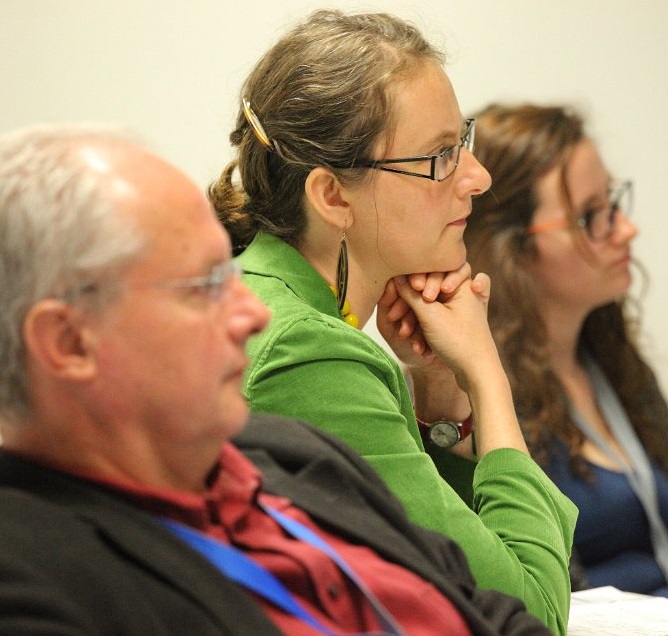RELOAD at the ESEE 2015 conference in Wageningen
 RELOAD scientists invited to a symposium on innovation and learning at the occasion of the 22nd European Seminar on Extension and Education (ESEE), held in Wageningen, The Netherlands, April 28 – May 1, 2015.
RELOAD scientists invited to a symposium on innovation and learning at the occasion of the 22nd European Seminar on Extension and Education (ESEE), held in Wageningen, The Netherlands, April 28 – May 1, 2015.
The title of the symposium was ‘Localizing innovations – actor, knowledge and activity analyses as entry points for learning and innovation in food and farming systems’. In her introduction to the topic, the chair person Prof Kaufmann introduced a perspective on food and farming systems as human activity systems that are established and shaped by human actors. Innovations in such systems require that these human actors change their previous actions. Research that is conceptualized as a collaborative learning process can facilitate such change. In order to engage in and manage collaborative learning processes involving ‘real world’ actors, researchers need appropriate methods to identify actors, to assess their activities, and to understand and integrate diverse types of knowledge. Her presentation was co-authored by Dr Anja Christinck and Dr Christian Hülsebusch.
See the presentation >>here.
These theoretical considerations were illustrated in the following three presentations. PhD student Guyo Malicha Roba from Kenya presented his work on ‘Identifying actors as prospective stakeholders in transdisciplinary research on pastoral livestock-meat supply chains in Northern Kenya’. Based on the methodology for stakeholder identification developed within the SP7 team, Mr Roba presented the complex network of actors on which the meat marketing from the pastoral areas of northern Kenya to the urban markets of the capital city of Nairobi relies. With the help of narrative interviews, the relationships between these actors, their diverse interests and the constraints faced at different links of the delivery chain were assessed in view of developing options for reducing losses and adding value. Mr Roba’s presentation was co-authored by Dr Margareta Amy Lelea, Dr Anja Christinck and Prof Brigitte Kaufmann.
See the presentation >>here.
PhD student Maria Restrepo Rodriguez presented work done on ‘Activity and knowledge analysis along (parts) of a local milk supply chain in Kenya in order to identify entry points for localized innovations’. She introduced a ‘control loop model’ to understand how farmers manage production processes based on a comparison of input and output of a production process in relation to goals and activities performed to achieve the goals. Together with two dairy farmer groups in Nakuru county, Kenya, activities around milking and post-harvest handling of milk were assessed. This work resulted in the co-development of a set of local ‘milk handling standards’ and innovative practices to improve the milk quality and reduce losses. This presentation was co-authored by Ms Eva Hilt, who had been involved in the field work in the course of her MSc studies, as well as by Dr Margareta Amy Lelea and Prof Brigitte Kaufmann.
See the presentation >>here.
Finally, Dr Anja Christinck emphasized in the presentation ‘From activity analysis to innovation: learning processes foster ‘localized’ innovation in food and farming systems’ that innovations, in order to be relevant for local actors, need to be related to the context in which they will have to fulfill their functions. Different types of innovations may differ in the degree of context-relatedness, depending on the level of learning that is required for their successful application. One way for scientists to learn about what makes innovations relevant to local actors is to identify local innovations that have been implemented by farmers or pastoralists themselves, and to initiate exchange among local actors on the value and relevance of these innovations. By observing the knowledge exchange among the local actors and the criteria on which they base their assessment, scientists can learn what makes an innovation relevant for a specific context. This presentation was co-authored by Dr Christian Hülsebusch and Prof Brigitte Kaufmann.
See the presentation >>here.






